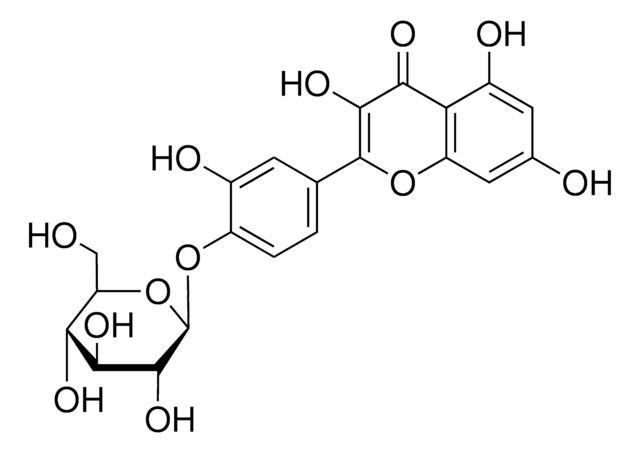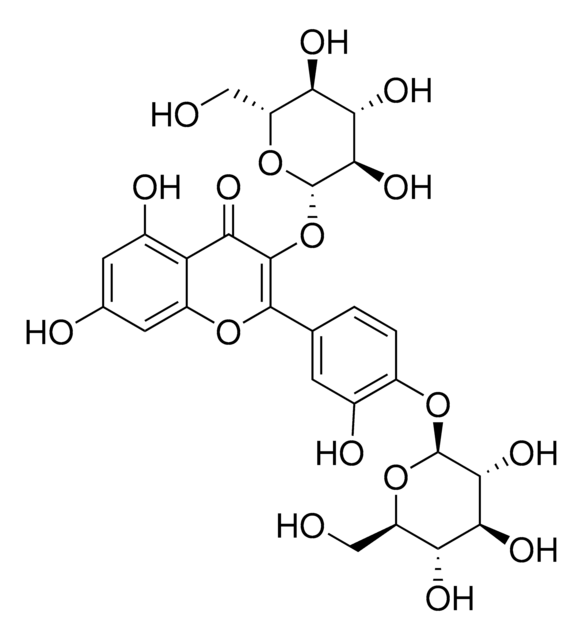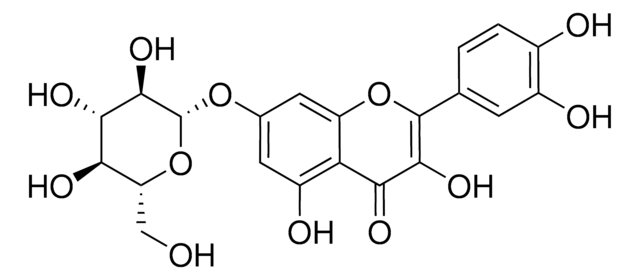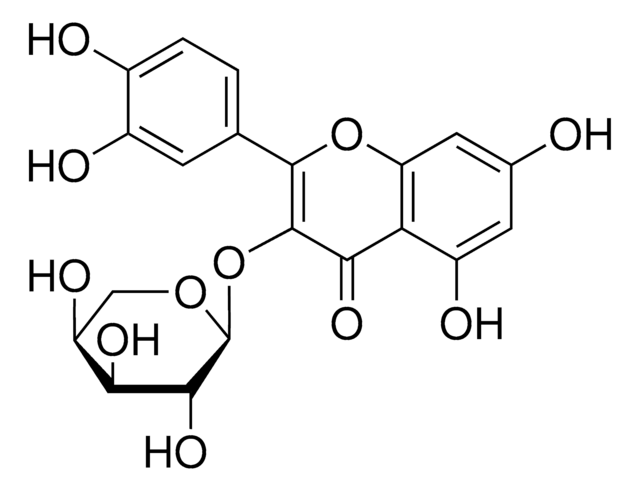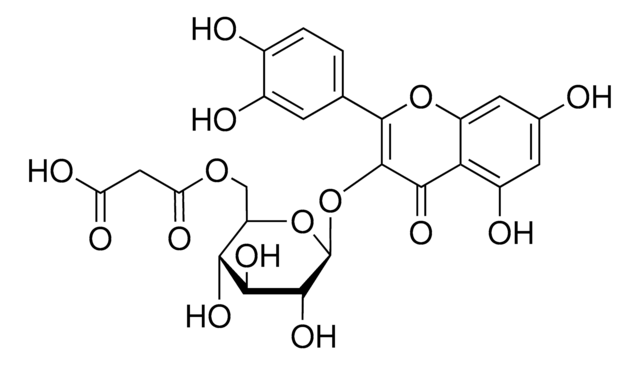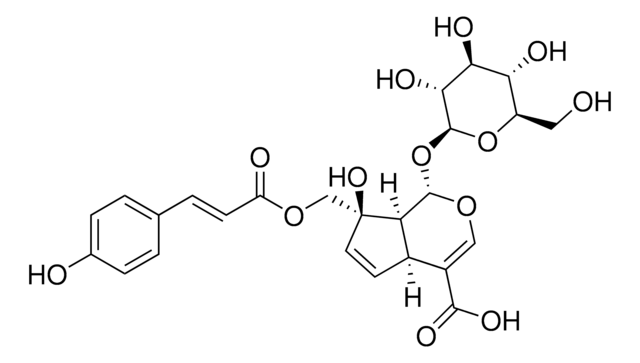91802
Spiraeoside
analytical standard
Synonym(s):
3,3′,4′,5,7-Pentahydroxyflavone 4′-glucoside, Quercetin 4′-O-β-D-glucopyranoside, Quercetin 4′-glucoside, Spiraein, Spireoside
About This Item
Recommended Products
grade
analytical standard
Quality Level
Assay
≥95.0% (HPLC)
shelf life
limited shelf life, expiry date on the label
technique(s)
HPLC: suitable
gas chromatography (GC): suitable
impurities
≤10.0% water (Karl Fischer)
application(s)
food and beverages
format
neat
SMILES string
OC[C@H]1O[C@@H](Oc2ccc(cc2O)C3=C(O)C(=O)c4c(O)cc(O)cc4O3)[C@H](O)[C@@H](O)[C@@H]1O
InChI
1S/C21H20O12/c22-6-13-15(26)17(28)19(30)21(33-13)32-11-2-1-7(3-9(11)24)20-18(29)16(27)14-10(25)4-8(23)5-12(14)31-20/h1-5,13,15,17,19,21-26,28-30H,6H2/t13-,15-,17+,19-,21-/m1/s1
InChI key
OIUBYZLTFSLSBY-HMGRVEAOSA-N
Looking for similar products? Visit Product Comparison Guide
General description
Application
Packaging
Choose from one of the most recent versions:
Already Own This Product?
Find documentation for the products that you have recently purchased in the Document Library.
Our team of scientists has experience in all areas of research including Life Science, Material Science, Chemical Synthesis, Chromatography, Analytical and many others.
Contact Technical Service